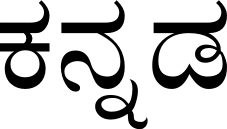Related Research Articles

Hindi, or more precisely Modern Standard Hindi, is an Indo-Aryan language spoken chiefly in India. Hindi has been described as a standardised and Sanskritised register of the Hindustani language, which itself is based primarily on the Khariboli dialect of Delhi and neighbouring areas of Northern India. Hindi, written in the Devanagari script, is one of the two official languages of the Government of India, along with the English language. It is an official language in 9 States and 3 Union Territories and an additional official language in 3 other States. Hindi is also one of the 22 scheduled languages of the Republic of India.
India is the second most populated country in the world with nearly a fifth of the world's population. According to the 2019 revision of the World Population Prospects the population stood at 1,352,642,280.

Punjabi is an Indo-Aryan language with more than 125 million native speakers in the Indian subcontinent and around the world. It is the native language of the Punjabi people, an ethnolinguistic group of the cultural region of Punjab, which encompasses northwest India and eastern Pakistan.

Sanskrit is a classical language of South Asia belonging to the Indo-Aryan branch of the Indo-European languages. It arose in South Asia after its predecessor languages had diffused there from the northwest in the late Bronze Age. Sanskrit is the sacred language of Hinduism, the language of classical Hindu philosophy, and of historical texts of Buddhism and Jainism. It was a link language in ancient and medieval South Asia, and upon transmission of Hindu and Buddhist culture to Southeast Asia, East Asia and Central Asia in the early medieval era, it became a language of religion and high culture, and of the political elites in some of these regions. As a result, Sanskrit had a lasting impact on the languages of South Asia, Southeast Asia and East Asia, especially in their formal and learned vocabularies.

Tamil is a Dravidian language natively spoken by the Tamil people of South Asia. Tamil is the official language of the Indian state of Tamil Nadu, as well as two sovereign nations, Singapore and Sri Lanka. In India, it is also the official language of the Union Territory of Puducherry. Tamil is spoken by significant minorities in the four other South Indian states of Kerala, Karnataka, Andhra Pradesh and Telangana and the Union Territory of the Andaman and Nicobar Islands. It is also spoken by the Tamil diaspora found in many countries, including Malaysia, South Africa, United Kingdom, United States, Canada, and Australia. Tamil is also natively spoken by Sri Lankan Moors.

Urdu is an Indo-Aryan language spoken chiefly in South Asia. It is the official national language and lingua franca of Pakistan. In India, Urdu is an Eighth Schedule language whose status, function, and cultural heritage is recognized by the Constitution of India; it has some form of official status in several Indian states.

Kannada is a Dravidian language spoken predominantly by the people of Karnataka in south western region of India. The language is also spoken by linguistic minorities in the states of Maharashtra, Andhra Pradesh, Tamil Nadu, Telangana, Kerala and Goa; and also by Kannadigas abroad. The language had roughly 43 million native speakers by 2011. Kannada is also spoken as a second and third language by over 12.9 million non-Kannada speakers in Karnataka, which adds up to 56.9 million speakers. It is one of the scheduled languages of India and the official and administrative language of the state of Karnataka. Kannada was the court language of some of the most powerful empires of South and Central India, such as the Chalukya dynasty, the Rashtrakuta dynasty, the Vijayanagara Empire and the Hoysala Empire.

Telugu is a Dravidian language spoken by Telugu people predominantly living in the Indian states of Andhra Pradesh, Telangana and Yanam district of Puducherry, India, where it is also the official language. It stands alongside Hindi and Bengali as one of the few languages with primary official language status in more than one Indian state. Telugu is also a linguistic minority in the states of Odisha, Karnataka, Tamil Nadu, Kerala, Punjab, Chhattisgarh, Maharashtra and Andaman and Nicobar Islands. It is one of six languages designated a classical language of India by the country's government.

The Indo-Aryan or Indic languages form a major language family of South Asia. They constitute a branch of the Indo-Iranian languages, themselves a branch of the Indo-European language family. As of the early 21st century more than 800 million people speak Indo-Aryan languages, primarily in India, Bangladesh, Nepal, Pakistan and Sri Lanka. Moreover, large immigrant and expatriate Indo-Aryan-speaking communities live in Northwestern Europe, Western Asia, North America, Southeast Africa and Australia. There are well over 200 known Indo-Aryan languages.

Arunachal Pradesh is a state in Northeast India. It borders the states of Assam and Nagaland to the south. It shares international borders with Bhutan in the west, Myanmar in the east, and a disputed border with China in the north at the McMahon Line. Itanagar is the state capital of Arunachal Pradesh. Arunachal Pradesh is the largest of the Seven Sister States of Northeast India by area.

Languages spoken in India belong to several language families, the major ones being the Indo-Aryan languages spoken by 78.05% of Indians and the Dravidian languages spoken by 19.64% of Indians. Languages spoken by the remaining 2.31% of the population belong to the Austroasiatic, Sino-Tibetan, Tai-Kadai and a few other minor language families and isolates. India has the world's fourth highest number of languages (427), after Nigeria (524), Indonesia (710) and Papua New Guinea (840).

Zee TV is a Hindi language general entertainment channel owned by the Essel Group in India. It is associated with several other sister channels which provide services in Tamil, Hindi, English and several regional languages of India. Zee TV and its sister channels are operated by Zee Entertainment Enterprises, a subsidiary of the Essel Group. The chairman of the group is Subhash Chandra, who is a Bharatiya Janata Party backed member of the Rajya Sabha. Zee TV was launched on 2 October 1992 as the flagship channel of the Zee Telefirms Ltd. The channel was the first Hindi language subscription channel in India.

India is a federal union comprising 28 states and 8 union territories, for a total of 36 entities. The states and union territories are further subdivided into districts and smaller administrative divisions.

The Bhil languages are a group of Indo-Aryan languages spoken in 2011 by around 10.4 million Bhils in western and central India. They constitute the primary languages of the southern Aravalli Range in Rajasthan and the western Satpura Range in Madhya Pradesh, northwestern Maharashtra, and southern Gujarat. According to the 52nd report of the commissioner for linguistic minorities in India, Ministry of Minority Affairs, Bhili is the most commonly spoken language of the union territory of Dadra and Nagar Haveli constituting 40.42% of its total population. Bhili speakers are also significant in the states of Gujarat (4.75%), Madhya Pradesh (4.93%) and Rajasthan (4.60%).
Dangri language may refer to:

Nepali is an Indo-Aryan language of the sub-branch of Eastern Pahari. It is the official language of Nepal and one of the 22 scheduled languages of India. Also known by the endonym Khas kura, the language is also called Gorkhali or Parbatiya in some contexts. It is spoken mainly in Nepal and by about a quarter of the population in Bhutan. In India, Nepali has official status in the state of Sikkim and in the Darjeeling Sadar subdivision and Kalimpong district of West Bengal. It has a significant number of speakers in the states of Arunachal Pradesh, Assam, Himachal Pradesh, Manipur, Mizoram and Uttarakhand. It is also spoken in Myanmar and by the Nepali diaspora worldwide. Nepali developed in proximity to a number of Indo-Aryan languages, most notably the other Pahari languages and Maithili and shows Sanskrit influence. However, owing to Nepal's location, it has also been influenced by Tibeto-Burman languages. Nepali is mainly differentiated from Central Pahari, both in grammar and vocabulary, by Tibeto-Burman idioms owing to close contact with this language group.
Laksh, also known as Lakshya, is an Indian actor. He first gained recognition for his role in MTV India's Warrior High. In 2017, he played Porus in Sony TV's Porus, the most expensive show in Indian television history.

Madhusudan Amilal Dhaky was an architectural and art historian from Gujarat, India. He had written extensively on Indian temple architecture, Jain literature and art.

Porus is a historical drama television series based on the Battle of the Hydaspes, visualizing the lives of Indian warrior and ruler Porus, King of the Pauravas and Alexander The Great, King of the Macedonian Empire. It premiered on 27 November 2017 on Sony TV. Its last episode was aired on 13 November 2018. Another historical drama Chandragupta Maurya replaced it with seamless continuity of story.
Suhani Dhanki is an Indian dancer and television actress. Suhani is best known for her portrayal of Madri in Mahabharat on Star Plus.
References
- ↑ "Statement 1: Abstract of speakers' strength of languages and mother tongues - 2011". www.censusindia.gov.in. Office of the Registrar General & Census Commissioner, India. Retrieved 7 July 2018.
- ↑ Hammarström, Harald; Forkel, Robert; Haspelmath, Martin, eds. (2017). "Dhanki". Glottolog 3.0 . Jena, Germany: Max Planck Institute for the Science of Human History.
| This article about Indo-Aryan languages is a stub. You can help Wikipedia by expanding it. |